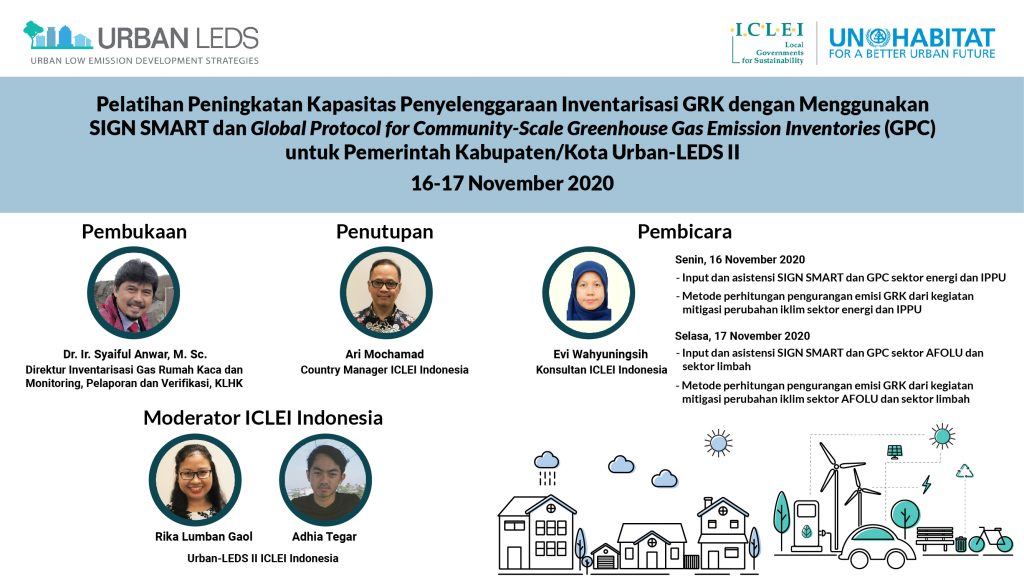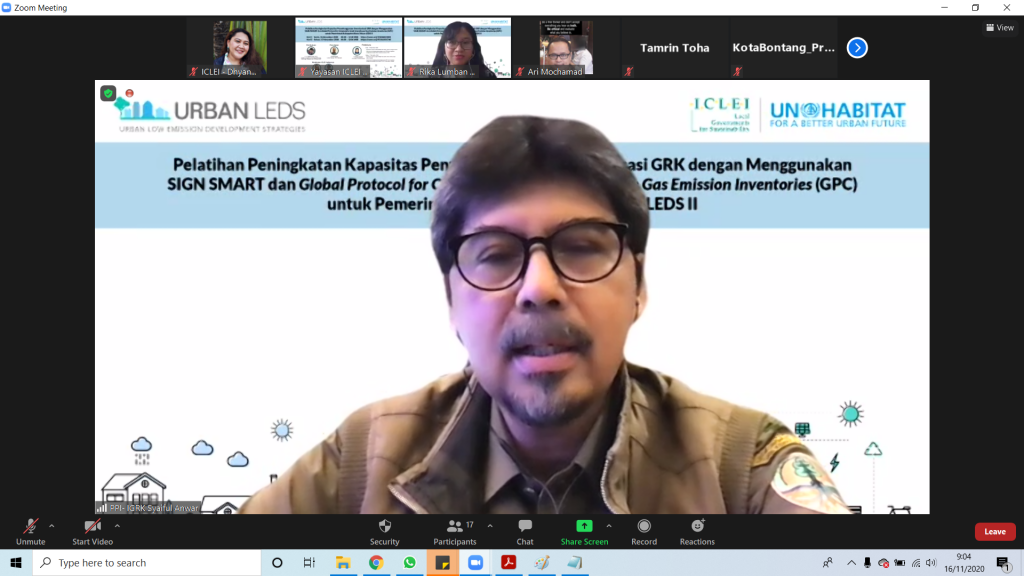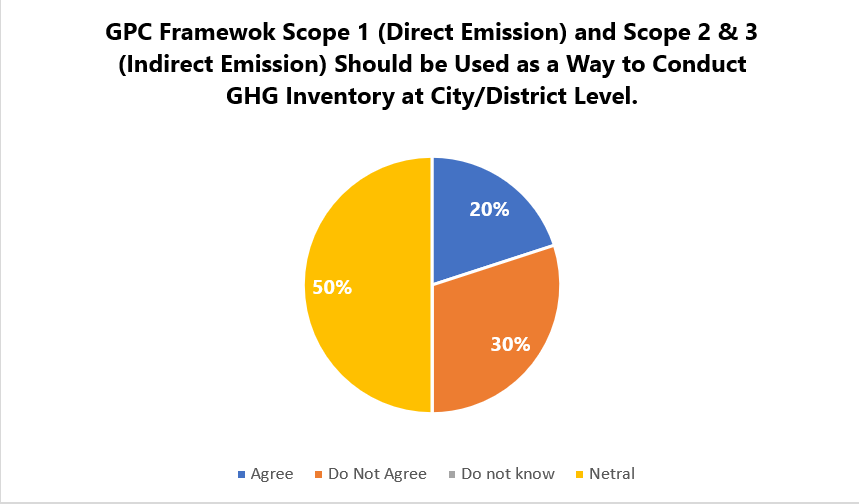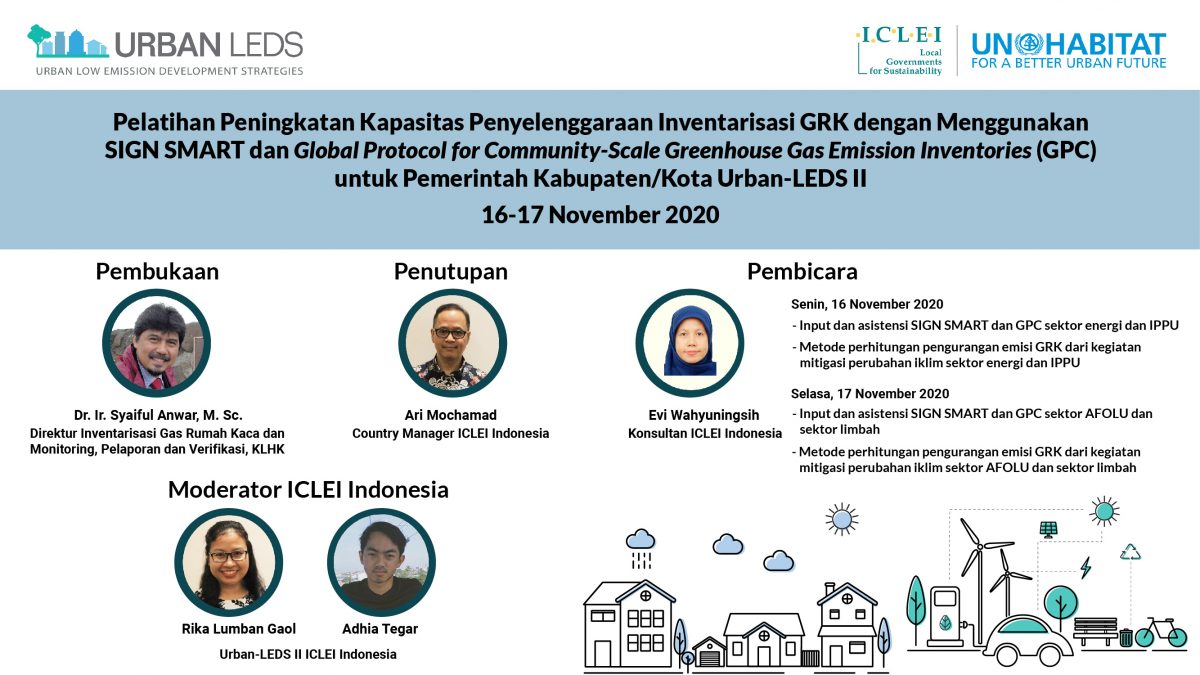
Using GIS to calculate the importance of land use management to achieve Net Zero Targets in Africa’s Cities
November 27, 2020
Testing of National MRV Pilot Project in Balikpapan City’s Manggar Landfill completed
December 2, 2020As a party to the Paris Agreement, the Indonesian Government has to realize its Nationally Determined Contribution (NDC), which begins with a robust understanding of countrywide emissions. Presidential Regulation No. 71/2011 provides the mandate for local governments to conduct their GHG inventories, which then support the whole of Indonesia’s emissions inventory. This serves as the basis for developing mitigation actions and emission reduction targets as stated in MoEF Regulation No.72.

Jakarta, Indonesia – Under the Urban-LEDS II project, ICLEI – Local Governments for Sustainability Indonesia Office (ICLEI SEAS) hosted a two-day GHG Inventory training on 16-17 November 2020 to enhance the participating local governments’ capacity to carry out GHG inventories using the SIGN SMART and GPC frameworks, while adopting the 2006 guidelines from the Intergovernmental Panel on Climate Change (IPCC).
The first day focused on key emitting sectors namely energy and Industrial Processes and Product Use (IPPU) sectors, while the second day centered on the Agriculture, Forestry and Other Land Use (AFOLU) and waste sectors. The training started off with an assessment of the participants’ technical understanding of GHGIs, and capped off with another assessment to gauge knowledge gained.
IPCC 2006 Guidelines as basis for SIGN SMART and GPC
Adopting the 2006 guidelines in calculating and reporting GHG emissions, the Ministry of Environment and Forestry (MoEF) has developed an online GHG emissions reporting tool called SIGN SMART, which stands for “simple, easy to measure, accurate, concisely right and transparent”. With this tool, local governments are enabled to supply inputs such as GHG emissions activity data, which then automatically calculates for the overall inventory. However, the tool only calculates direct emissions within an administrative area, thus has not considered the regional and cross-border activities. This makes the development of a GHG inventory at the city level more technically challenging than at the national scale.
To address this limitation, ICLEI, WRI and C40 have introduced an additional framework called Global Protocol for Community-Scale Greenhouse Gas Emission Inventories (GPC) which applies to subnational level, while ensuring compliance to the IPCC 2006 guidelines. GPC calculates both direct, and indirect emissions or emissions that occurred outside of the city border. It also has guidance for calculating scope 3 emissions or emissions that occurred outside the city boundary, but driven by actions inside the city.
Mitigation actions to put into practice
The GHGI training also concentrated on key technical areas such as calculation methodology, data activity, and data sources and acquisition. Excel spreadsheets based on SIGN SMART templates were provided for all sectors to the participants to complete as part of the activity’s training.
Further, potential mitigation measures for the participating local government sectors were also tackled in terms of effectiveness in reducing emissions. For instance, the training discussed the use of solar photovoltaic cells to power street lights and reduce emissions from the energy sector, capturing methane gas from landfill as an energy source, and the use of animal wastes for biogas production.
Challenges of local governments in GHGI
Despite the availability of a GHGI methodology suited for cities and subnational entities, local governments still face issues in developing their emissions inventories. The training mentioned that while activity data is best sourced from primary sources such as data producers, most of the participants expressed difficulty in obtaining it due to the reluctance of energy suppliers. Additionally, some participants expressed limited experience in developing GHG inventories, which means come cities are restricted by gaps in technical capacities.


Recommended links:
- https://icleiseas.org/index.php/2019/06/13/building-capacities-of-indonesian-cities-in-using-the-national-ghg-inventory-system-sign-smart/
- https://urban-leds.org/indonesian-local-governments-support-the-new-portal-on-integrated-climate-action-reporting-for-low-carbon-development/
- https://urban-leds.org/cities-of-balikpapan-and-bogor-prioritize-emissi/

